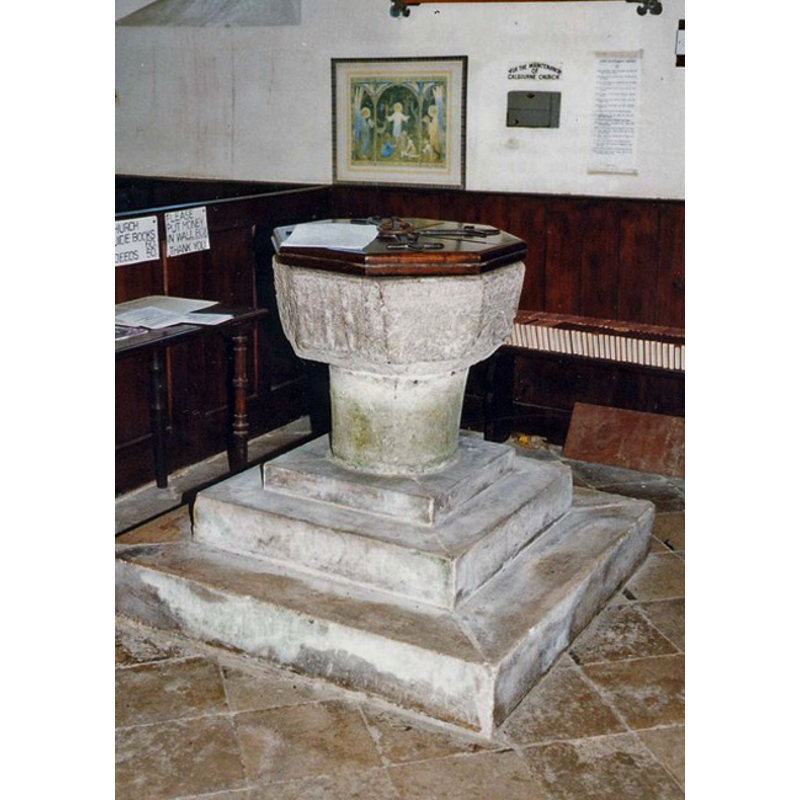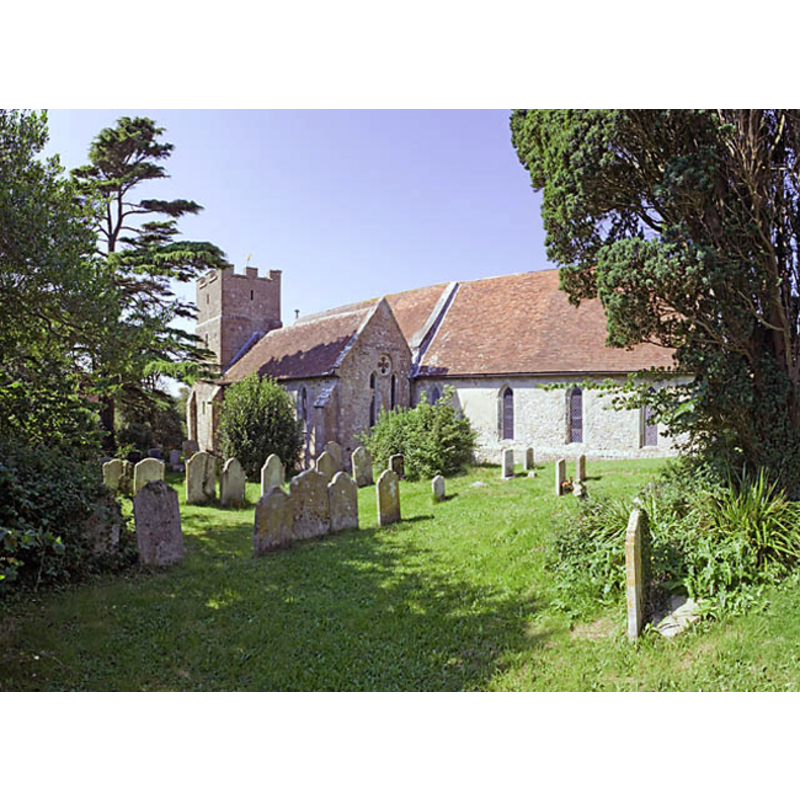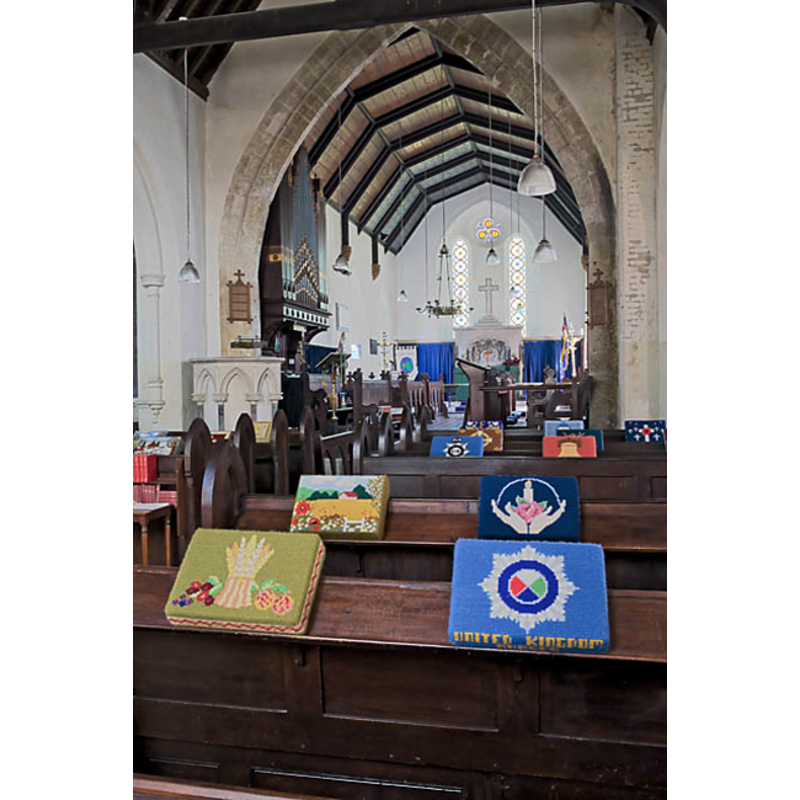Calbourne / Calborne / Cauborne / Cauburne / Caulebourne / Cawelburna / Cawelbourne / Kauleborne

Image copyright © John Salmon, 1999
CC-BY-SA-2.0
Results: 7 records
design element - architectural - arcade - blind - round arches
Scene Description: now much eroded but originally probably an arcade of blind round arches
Copyright Statement: Image copyright © Webrarian, 2009
Image Source: detail of a digital photograph taken 3 October 2007 by Webrarian [http://www.flickr.com/photos/webrarian/1534041191/] [accessed 8 May 2009]
Copyright Instructions: PERMISSION NOT AVAILABLE -- IMAGE NOT FOR PUBLIC USE
design element - architectural - arch-head - round
view of church exterior - southeast view
view of church interior - nave - looking east
view of font and cover
view of font and cover
view of font and cover in context
INFORMATION
FontID: 14611CAL
Object Type: Baptismal Font1
Church/Chapel: Parish Church of All Saints
Church Patron Saints: All Saints
Church Location: Lynch Ln, Calbourne, Newport PO30 4JQ, UK
Country Name: England
Location: Isle of Wight, South East
Directions to Site: Located 8 km from Newport, on the W side of the island
Ecclesiastic Region: Diocese of Portsmouth
Historical Region: Hundred of West Medine / Hundred of Calbourne [in Domesday] -- formerly Hampshire
Font Location in Church: Inside the church
Century and Period: 12th century / 13th century [re-cut], Transitional / Early English [altered]
Font Notes:
Click to view
There are two entries for Calbourne [variant spelling] in the Domesday survey [https://opendomesday.org/place/SZ4286/calbourne/] [accessed 18 February 2020] one of which reports "1 church. 0.5 church lands" in it. A font here is illustrated in Stone (1891) [cf. infra]. Described in Cox (1911): "The Early English font at Calbourne had a square bowl, but the angles have been hacked off to turn it into an octagon […] The font is well worth attention. It is generally described as Early English, and the bowl is octagonal. But to my mind it is of late or Transitional Norman. It was un-doubtedly in the first instance square in the bowl, and has had the angles chopped off, possibly in 1842, to improve it into an octagon; thereby destroying the arcading and other rude patterns with which the four faces had originally been carved." The Victoria County History (Hampshire, vol. 5, 1912) notes: "The church existed at the time of Domesday [...] as a manorial chapel —conjecturally an aisleless structure— which in the 12th century gave place to a building with north and south chapels [...] Early in the 13th century a remodelling took place [...] There is an interesting 13th-century font with a mutilated octagonal—originally square—bowl, on the axial faces of which are cut symbolic characters". A footnote refers to an earlier source: "Illustrated in Stone, Archit. Antiq. of Isle of Wight, ii, 11. It appears to have been of the usual square form, with the angles cut off at a later period to render it octagonal." In Lloyd & Pevsner (2006): "Strange -- it looks as if the bowl was originally square with simplecarvings, but the angles were later cut off to make it octagonal." The basin has indeed been re-cut from an originally square basin; the original sides still show their decoration: on one side, large round arch-heads or lunettes are arranged up-and-down in mirror form; on another side a very warned arcade of narrow arches; the pedestal on which it is raised is round, not quite cylindrical, and probbaly not the original support. It is is raised on a modern three-step plinth. The wooden cover is octagonal and flat, with metal decoration and ring handle; probably 19th-century.
COORDINATES
Church Latitude & Longitude Decimal: 50.677222, -1.399444
Church Latitude & Longitude DMS: 50° 40′ 38″ N, 1° 23′ 58″ W
UTM: 30U 613085 5615154
MEDIUM AND MEASUREMENTS
Material: stone
Font Shape: square [re-cut to octagonal]
Basin Exterior Shape: square [re-cut to octagonal]
LID INFORMATION
Date: modern?
Material: wood
Apparatus: no
Notes: octagonal and flat, with metal decoration and ring handle; appears modern
REFERENCES
Victoria County History [online], University of London, 1993-. Accessed: 2009-05-08 00:00:00. URL: https://www.british-history.ac.uk.
Cox, John Charles, Isle of Wight: its churches and religious houses, London: G. Allen & Sons, 1911
Stone, Percy G. [Goddard?], The Architectural Antiquities of the Isle of Wight, London: [s.n.], 1891


